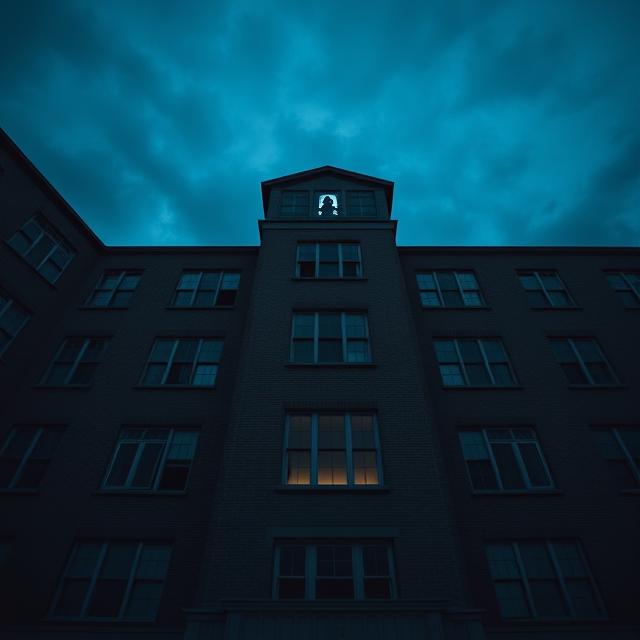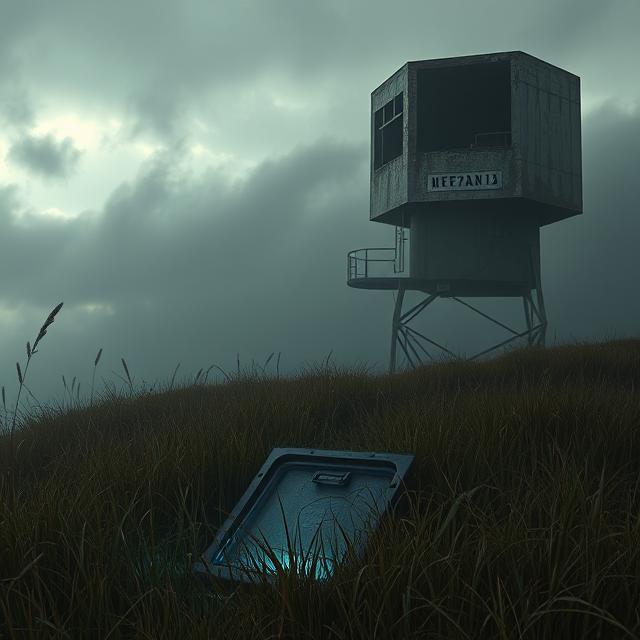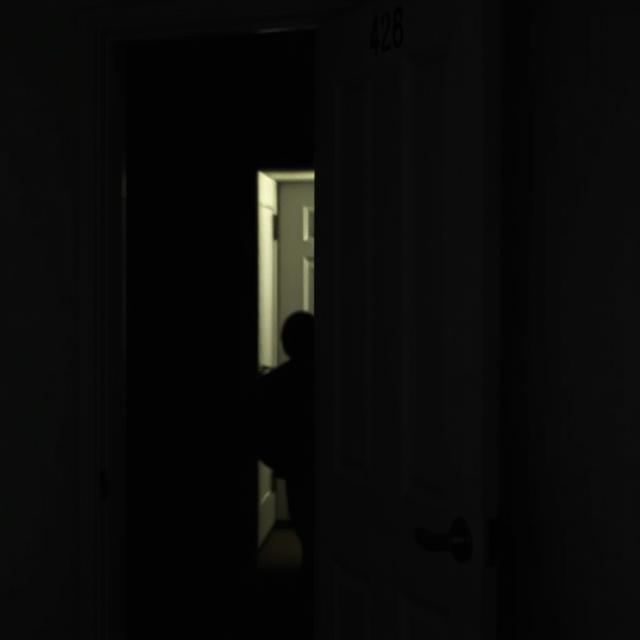On a prominent hill overlooking the Hocking River in Athens, Ohio, a sprawling complex of Victorian Gothic architecture stands as a silent monument to a century of human suffering. Its bat-wing layout and ornate brickwork were once the face of progressive, compassionate care, but today, it is known by a different name: The Ridges, one of the most haunted places in America. Formerly the Athens Lunatic Asylum, this institution’s history is a dark tapestry woven with threads of archaic medical treatments, tragic suicides, and restless spirits who, it is said, have never left. For generations, tales of phantom patients, disembodied screams, and an indelible human stain have cemented its reputation as a place where the veil between the living and the dead is terrifyingly thin.
A Palace for the Insane: The Kirkbride Dream
When the Athens Lunatic Asylum opened its doors on January 9, 1874, it was a beacon of hope. Designed according to the revolutionary “Kirkbride Plan,” it was conceived not as a prison, but as a place of healing. Dr. Thomas Story Kirkbride, a 19th-century physician, believed that the mentally ill could be cured with fresh air, natural light, beautiful landscapes, and “moral treatment.” The Athens asylum was a testament to this philosophy, a massive, self-sustaining community with its own farms, orchards, and gardens, where patients were meant to find peace and rehabilitation through structured, meaningful work.
However, the noble intentions behind its founding quickly eroded under the weight of overcrowding and evolving, often brutal, medical philosophies. Designed to house just over 500 patients, by the 1950s the asylum’s population had swelled to nearly 2,000. The once-compassionate care devolved into a desperate struggle to maintain order. The reasons for commitment became shockingly broad and reflected the prejudices of the era. Civil War veterans suffering from what we now know as PTSD, women diagnosed with “hysteria” or postpartum depression, rebellious teenagers, epileptics, and even those whose “insanity” was attributed to masturbation were sent to The Ridges, their lives stripped away and placed in the hands of an overwhelmed and often unskilled staff.
A Legacy of Pain: Lobotomies and Brutal Treatments
Within the walls of the overcrowded asylum, the dream of “moral treatment” gave way to a nightmare of primitive and often barbaric procedures. Patients were subjected to hydrotherapy, which involved being submerged in tubs of ice-cold water or blasted with high-pressure hoses into submission. Electroshock therapy was a common practice. But the most infamous chapter in the asylum’s history involves Dr. Walter Freeman, the “father” of the trans-orbital lobotomy.
During the 1950s, Freeman would visit The Ridges, performing hundreds of his “ice-pick” lobotomies. This horrific procedure involved hammering a sharp instrument through the patient’s eye socket to sever connections in the brain’s prefrontal cortex. Freeman, a showman as much as a physician, could perform more than 20 of these procedures in a single day. While a small percentage of patients died on the table, many others were left in a permanent vegetative state—their spirits broken, their bodies shells of their former selves. The legacy of these treatments left an indelible psychic scar on the institution, a palpable sense of pain that many believe still lingers in its now-empty wards.
The Ghosts of The Ridges: Stories from the Hillside
With such a tragic history, it is no surprise that The Ridges is a hotspot for paranormal activity. Students and visitors have reported a wide range of unsettling phenomena for decades: disembodied voices echoing through empty corridors, doors slamming shut on their own, the ghostly squeak of a gurney being pushed down a hallway, and shadowy figures darting between the numbered gravestones in the asylum’s cemeteries. But among the countless tales, one story stands out as the most famous and chilling: the ghost of Margaret Schilling.
On December 1, 1978, a patient named Margaret Schilling disappeared from one of the active wards. Despite extensive searches, no trace of her was found. For 42 days, her whereabouts remained a mystery. Then, on January 12, 1979, a maintenance worker discovered her body in a locked, long-abandoned ward on the top floor of the main building.
The scene was both tragic and bizarre. Margaret, who was found to have died of natural heart failure likely due to exposure in the unheated ward, was found completely naked on the concrete floor. Her clothes were neatly folded in a pile beside her. When her decomposing body was removed, it left behind a perfect, permanent stain on the floor—a dark and detailed silhouette of her body and hair.
For over four decades, this stain has remained, stubbornly resisting every attempt to scrub it away. It has been scientifically analyzed and found to be a product of human decomposition, a grim chemical signature left by a lonely death. Today, visitors claim to see Margaret’s apparition staring out the window of the room where she died. Her spirit is said to wander the halls, her ghostly presence a permanent fixture of the asylum’s tragic lore.
The Cemeteries: A Final Indignity
The grounds of The Ridges are home to three cemeteries, which hold the remains of nearly 2,000 patients. In a final, heartbreaking indignity, the gravestones for many of these individuals bear not a name, but a number. The asylum, seeking to save money, marked the graves of its indigent patients with small, numbered stones, effectively erasing their identities in death as they had been erased in life. In one of the cemeteries, the numbered graves of female patients form a distinct circle, which local legend claims has become a meeting place for a coven of witches, drawing on the concentrated energy of the tormented souls buried there.
The Ridges Today: A Haunted Campus
The Athens Lunatic Asylum officially closed its doors for good in 1993. The property was deeded to Ohio University, which has since renovated parts of the massive complex, transforming it into a unique part of its campus. The main building now houses the Kennedy Museum of Art, classrooms, and offices. Yet, the past is never far away.
While public access to the abandoned wards is restricted, the university and local historical societies offer guided tours of the grounds, acknowledging the site’s complex and often dark history. The stories persist, shared by a new generation of students who live and study in the shadow of the old asylum. They speak of strange feelings of being watched, of sudden cold spots, and of the faint sound of weeping coming from the upper floors on quiet nights.
The Ridges stands as a powerful and haunting reminder of our evolving understanding of mental illness. It is a place of profound historical importance, a beautiful architectural marvel with a deeply troubled soul. It is a place where the echoes of past suffering refuse to fade, ensuring that the stories of those who lived and died within its walls will never be forgotten.
Want to explore the shadows even deeper? For more chilling cases like this, visit SinisterArchive.com, where the legends are real.




